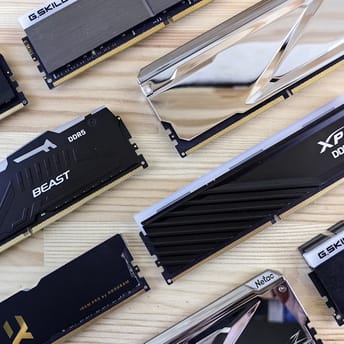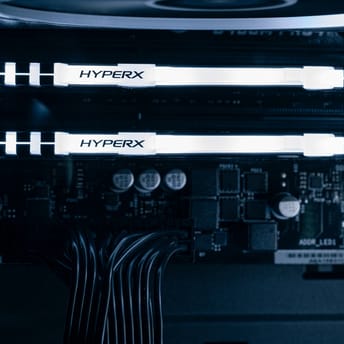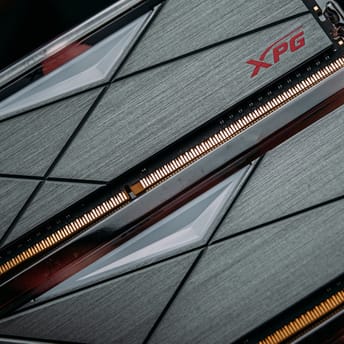DDR5 RAM prices hit new highs as 2×32 GB median tops $200

|
|
Key points
- On Nov 5, median US prices for DDR5 RAM kits moved above $120 for 2×16 GB and $200 for 2×32 GB in retail.
- Over six weeks, consumer DDR5 RAM prices rose 35% for 2×8 GB kits, 55% for 2×16 GB kits, and 70% for 2×32 GB kits.
- AI demand is driving the DRAM supercycle: manufacturing capacity is full, contract prices rise due to low supply, and consumers are paying.
On November 5, DDR5 RAM prices in US retail hit a new high. The median price for a DDR5 2×16 GB kit is above $120, and for a 2×32 GB kit, above $200 now. In a little over a month, consumer RAM prices are up about 40%, with mainstream gaming kits affected the most, rising up to 70%.
The ongoing DRAM supercycle is driving retail price increases amid AI demand. Memory makers leave less manufacturing capacity for consumer RAM while simultaneously hiking prices. Contract costs of DRAM have been growing, inventories are emptying, and each price reset flows through distributors and OEMs before reaching consumers.
MoM change in DDR5 RAM retail median prices in the US, 2025
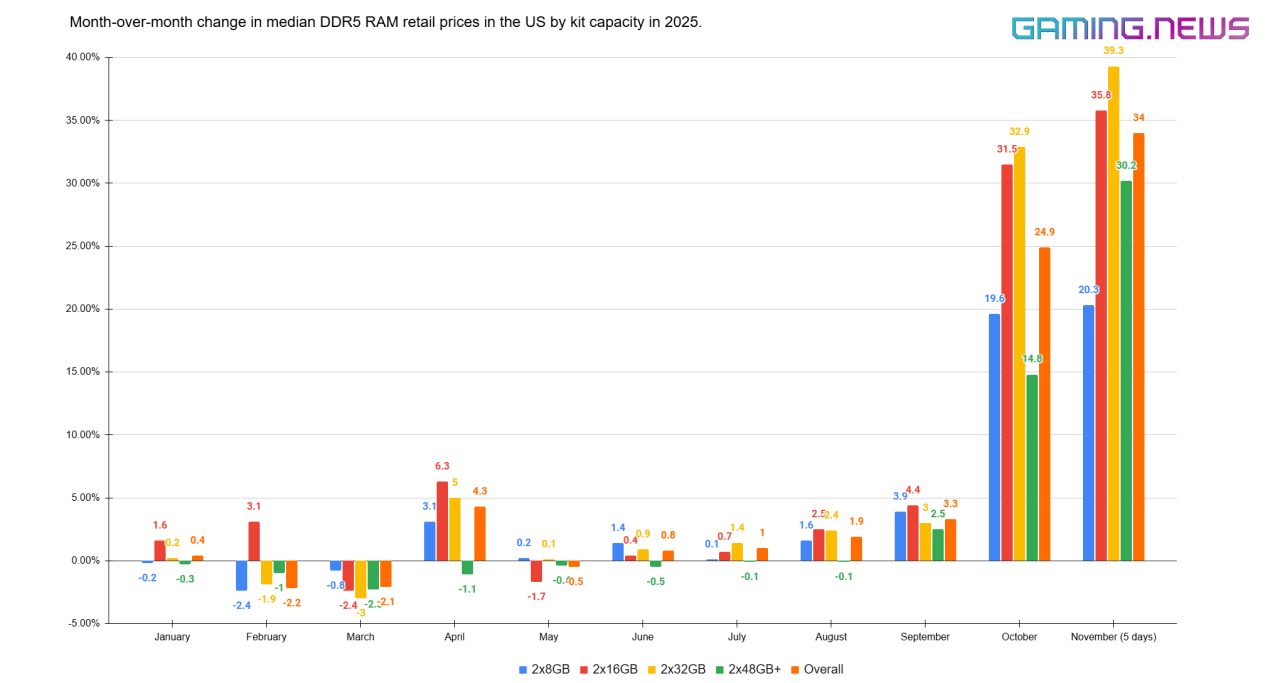
This is our second insight into consumer DDR5 RAM prices (see the first report here). With complete data, the final October increase came in higher than mid-month stats, because prices haven’t stopped rising, and early November shows no relief.
In October (compared to September), median DDR5 retail prices rose across all capacities: +19.6% for 2×8 GB, +31.5% for 2×16 GB, +32.9% for 2×32 GB, and +14.8% for 2×48 GB+, with the overall basket up 24.9%.
The November medians currently cover only the first five days; barring a reversal, the month-end percentages will be higher, as retail pricing continues to rise. Reversals are unlikely because not all manufacturer hikes have yet reached retail.
Current stats for November: +20.3% for 2×8 GB, +35.8% for 2×16 GB, +39.3% for 2×32 GB, and +30.2% for 2×48 GB+, bringing the overall month-to-date change to 34%.
There’s a bit of hope for big sales at the end of the month. Still, it’s likely to be offset by another round of hikes, so I wouldn’t wait to get a new RAM kit. Weekly trends are below.
Retail DDR5 RAM price changes, Week-over-week cut
Week
2×8 GB
2×16 GB
2×32 GB
September 1-7
-0.1%
0.7%
0.1%
September 8-14
0.7%
0.7%
0.1%
September 15-21
0.7%
1%
0.9%
September 22-28
1.2%
4.9%
5.4%
September 29-October 5
3.3%
4.1%
4.9%
October 6-12
4.4%
5%
9%
October 13-19
5.6%
8.9%
10.3%
October 20-26
8.5%
10.6%
10.7%
October 27-November 2
8.2%
13%
15.4%
Key points:
- Over the last 6 weeks, the median price of 2×8 GB DDR5 RAM kits has risen by 35%.
- The median price of 2×16 GB DDR5 RAM kits is up 55%.
- The median price of 2×32 GB DDR5 RAM kits is up 70%.
- About 15% of tracked SKUs went out of stock in the last three weeks.
- 2×8 GB capacity is rising the slowest, and new pricing filters through more gradually.
- Larger capacities have caught up, with 2×48 GB and 2×64 GB kit prices surging after hikes reached them.
- November figures are month-to-date and will be updated as new days are added.
There isn’t much to add when RAM has been rising by double-digit percentages weekly for several weeks in a row. It’s an alarming trend, and it isn’t slowing. There are no signs of the DRAM supercycle easing, as Micron and Adata warned about potential memory shortages.
Next, we turn to the daily median retail prices of DDR5 RAM in the US.
Daily median DDR5 RAM retail prices in US, 2025
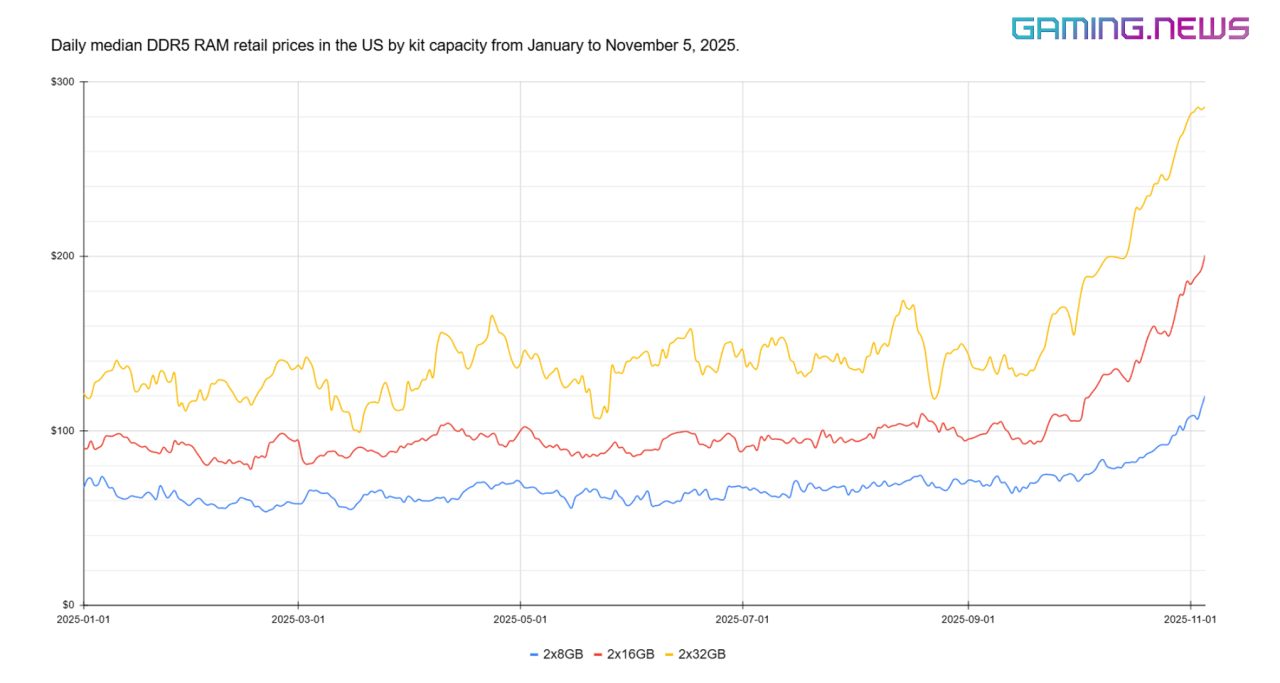
The graphic speaks for itself, quick snapshot below:
- On January 1, a DDR5 RAM 2×8GB kit cost $67, a 2×16GB kit $90.20, and a 2×32GB kit $121.60.
- On September 1, a 2×8GB kit cost $71.70, a 2×16GB kit $95.20, and a 2×32GB kit $204.50.
- On October 15, a 2×8GB kit cost $81.70, a 2×16GB kit $128.30, and a 2×32GB kit $146.60.
- On November 1, a 2×8GB kit cost $108.30, a 2×16GB kit $183.90, and a 2×32GB kit $281.50.
- Lowest daily median price for 2×8GB kit: $53.50 on February 20.
- Highest daily median price for 2×8GB kit: $120.10 on November 5.
- Lowest daily median price for 2×16GB kit: $78 on February 16.
- Highest daily median price for 2×16GB kit: $200.80 on November 5.
- Lowest daily median price for 2×32GB kit: $99.70 on March 18.
- Highest daily median price for 2×32GB kit: $285.90 on November 5.
Essentially, DDR5 RAM prices for consumers doubled in less than a year, a repeat of the previous DRAM supercycle.
Why are the prices for PC hardware rising?
AI demand is soaking up memory production, especially HBM and server-grade DRAM, leaving less capacity for consumer DDR5 RAM. With factories running at capacity, suppliers raise contract prices, and channel partners pass those increases along. Retail adjusts accordingly: restocks arrive at higher costs, promo depth shrinks, and everyday tags move up.
From there, it’s basic supply and demand. When supply trails demand, prices climb until either output catches up or buyers step back. And a usual consumer can’t outbid a giant AI company. Until AI orders ease or new capacity comes online, expect continued upward pressure and occasional RAM and SSD shortages.
Recent examples of capital and supply commitments that drain memory capacity:
- Nvidia invests $2 billion in xAI, tied to an estimated $20 billion GPU supply arrangement.
- Nvidia commits about $5 billion to Intel CPUs.
- Nvidia may invest up to $100 billion in OpenAI and bring 10 GW of AI GPUs.
- OpenAI signs a new GPU supply deal with AMD.
- Broadcom and OpenAI for 10 GW of custom AI accelerators.
As a reminder, analysts project the current DRAM supercycle to run into 2027, so prices will keep rising.
Beyond RAM, storage is set to get more expensive (AI to blame here, too). Adata and Micron already warned about it. And as OEM contracts expire, expect hikes in consumer and gaming devices that rely on memory and storage (smartphones, handhelds, consoles, laptops, GPUs, etc.). Precedent and similar warnings have already happened with new Xiaomi smartphones.
What’s next?
We’re still working on our price-tracking projects (launching soon) and analyzing the prices of other hardware components, with consumer SSD price analytics coming next week. The methodology is explained in detail in the previous RAM prices report.
